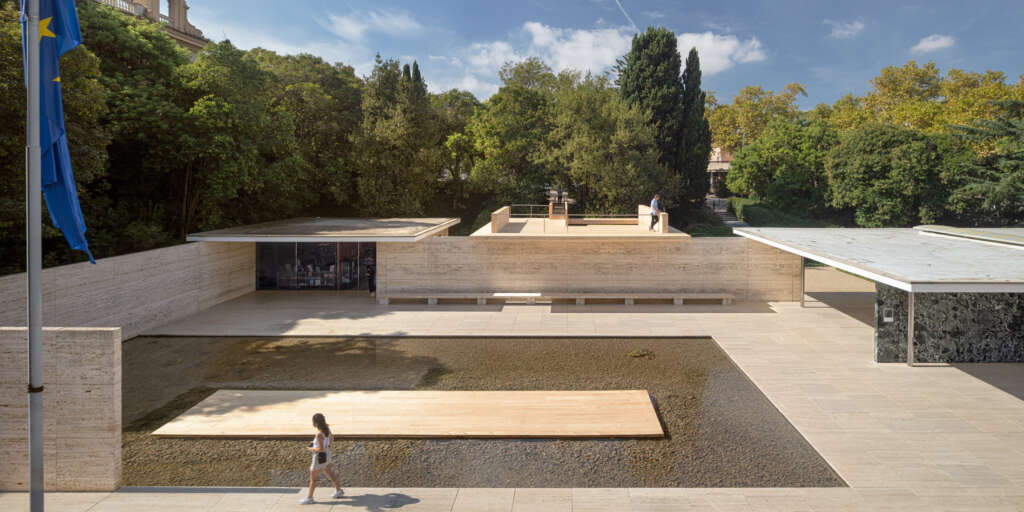
Mass is More
Architect: The Institute for Advanced Architecture of Catalonia (IAAC), Bauhaus Earth
Location: Barcelona, Spain
Type: Installation
Year: 2022
Photographs: Adria Goula
- The project, designed by the Institute for Advanced Architecture of Catalonia (IAAC) and Bauhaus Earth, establishes a dialogue between the industrial modernity of the 20th century and the new low-emission buildings of the 21st century.
- The event serves as a stage for the launch of MASS MADERA, a national network of pioneers whose main mission is to facilitate and promote the construction of green buildings, and work towards the decarbonization of architecture.
- Through various interventions, the installation shows how the use of wood and other regenerative materials can help reduce the high CO2 emissions that are associated with the construction industry.
- This installation will be hosted in the Mies van der Rohe Pavilion in Barcelona from October 1 to 9, and will be open to the general public.
The following description is courtesy of the architects. “Mass is More,” a project created by Daniel Ibáñez and Vicente Guallart of the Institute for Advanced Architecture of Catalonia (IAAC) and Alan Organschi of Bauhaus Earth (BE), will be on display until October 9 at the Mies van der Rohe Pavilion in Barcelona. The installation explores the use of regenerative and decarbonizing architectural materials in modern buildings. By reconsidering the materials being used in the original pavilion, this new installation reflects on how to regenerate our cities through the use of low-emission practices in order to achieve the EU’s environmental targets for 2050.
The project has been made possible through grant funding from Built by Nature (BbN), a philanthropic fund dedicated to accelerating the timber building transformation in Europe by radically reducing embodied carbon; safely storing carbon in our buildings for generations; and sequestering carbon by championing forest stewardship and regeneration.
Laudes Foundation is the founding partner of Built by Nature.
“Mass is More” will also host the launch of MASS MADERA, a network of Spanish pioneers in industrialized solid wood construction, including cities, governments, companies, organizations and architects from around the country. This network is being coordinated by IAAC, whose main objective is to promote the development of mass timber construction, and the reduction of CO2 emissions associated with it.
This new pavilion celebrates recent advancements in wood building technology, and also opens during the same week as the Barcelona European Forest City 2022. This weeklong initiative was organized by the European Forest Institute (EFI) in partnership with the Metropolitan Area of Barcelona (AMB),the Barcelona City Council, the Barcelona Provincial Council and the Generalitat de Catalunya together with scientific centers such as IAAC, CTFC, CREAF and Parc de Belloch. As part of the series of events and activities taking place in Barcelona throughout this year, the installation “Mass is More” intends to deepen the discussion on Biocities and new ways of designing and managing urban environments, based on the principles of circular bioeconomy, reflecting on our relationship with our forests and promoting new ways of construction.
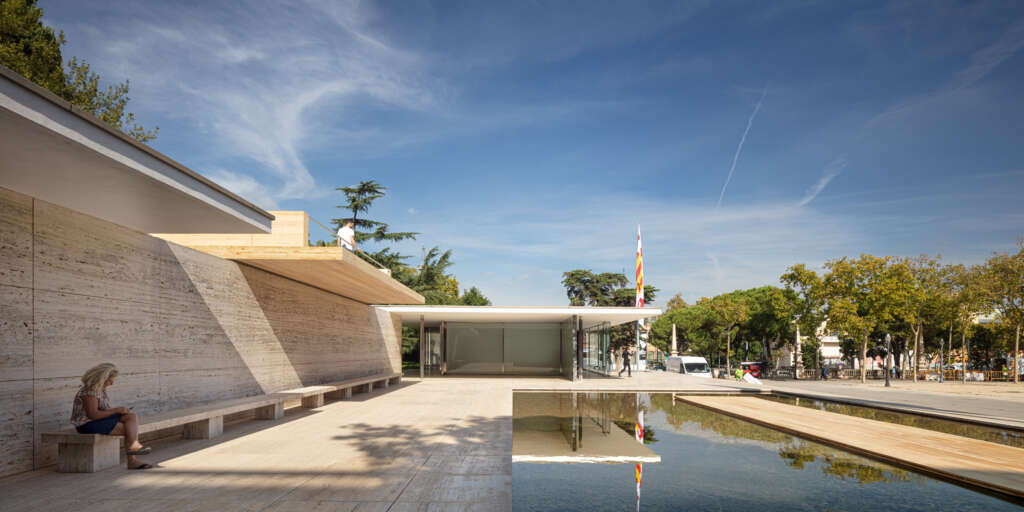
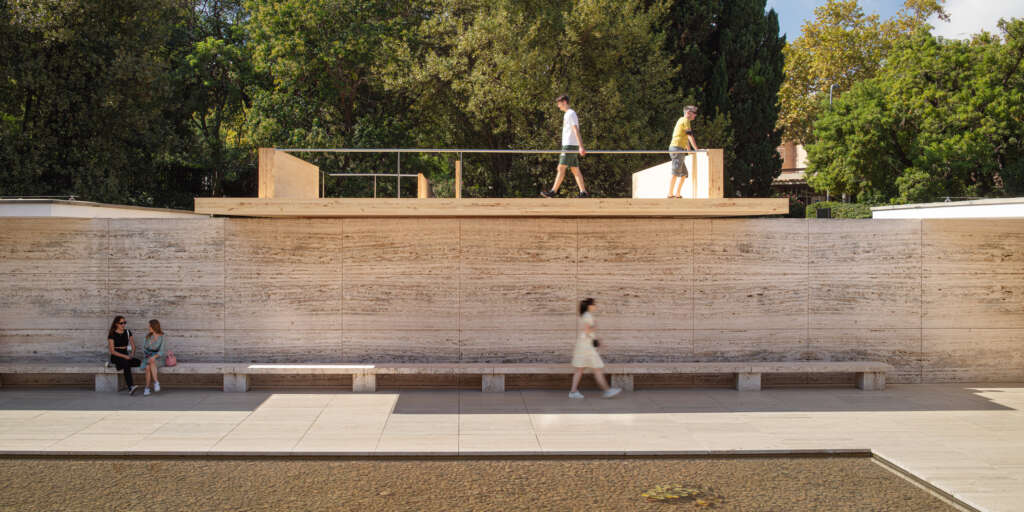

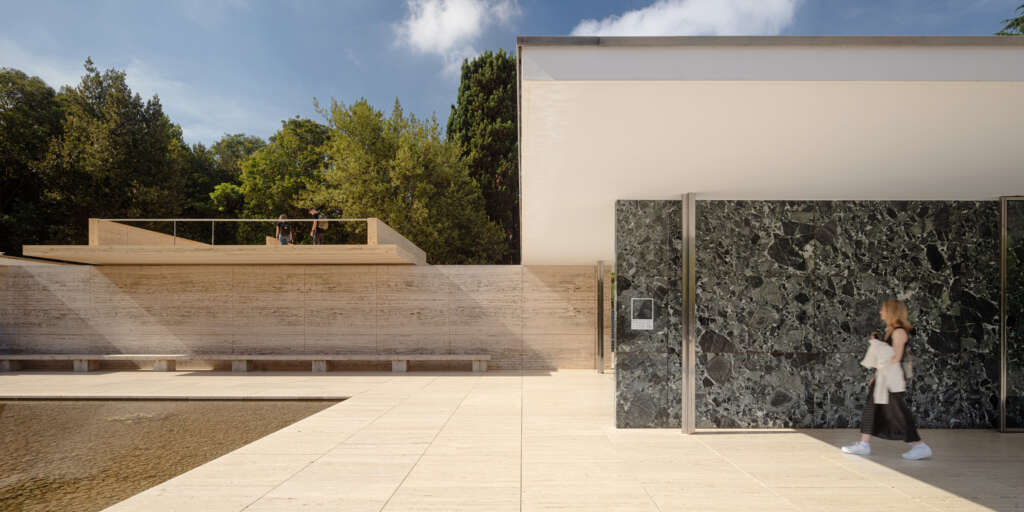
The “Mass is More” installation transforms the Mies van der Rohe Pavilion
Almost a century after the construction of the German Pavilion designed by Ludwig Mies van der Rohe and Lilly Reich, IAAC and Bauhaus Earth propose to create a dialogue between the past and the future of wood and an exhibition that explores the use of biogenic materials for architecture. The pavilion is also the host of the biennial European Union Prize for Contemporary Architecture / Mies van der Rohe Awards, attesting to the role and influence of the Fundació Mies van der Rohe in the current architectural discourse.
Adhering to the architectural language of the pavilion, this new installation creates a dialogue between the most advanced materials of the 20th century and the 21st century. Through a series of elements made of cross laminated timber (CLT) panels from local forests, this installation demonstrates the structural capabilities of this new materiality and its suitability for constructing more sustainable buildings with a much lower environmental impact. All the pieces that make up this installation have been produced by Xilonor, the most advanced Galician CLT company in Spain, part of the FINSA group.
In addition to the physical installation, the exhibit comprises a 4.8-meter-long diorama showing the path of wood from the forest to the city as a material with carbon-storing properties, An interactive digital application developed by Bestiario, a leading data visualization company, offers a comparison between the environmental impacts of the 1929 Barcelona Pavilion and of the mass timber installation. To compare both structures fairly, only architectural elements, such as the roof, walls, columns and floor, were considered. The comparative analysis comprises the embodied carbon emissions in every element, as well as the energy utilized, kilometers traveled and steps taken during the different processes of extraction, manufacturing, transportation and assembly. This digital piece is accompanied by analogue tags placed on various vertical elements of both pavilions, displaying all materials used for their fabrication. In the same way edible goods are required to disclose their ingredients, this piece offers transparency to architectural practice. Moreover, visitors will enjoy a video installation by filmmaker Jaume Cebolla within the pavilion. The screening shows the material transformations undergone by the wood harvested for the construction of the mass timber structure from a first-person perspective.
The design of the installation reflects the formal grid of the original pavilion, creating an alternative narrative and a different way of experiencing the site with new pathways and view corridors. Throughout the tour visitors will be able to see different uses and representations of wood and modern building technology.
The entrance to the space inverts the traditional circulation, offering the opportunity to first pass through the trees in the garden behind the pavilion. An elevated walkway leads to a cantilevered platform that offers unprecedented views of the Barcelona pavilion. This platform gives access to an auditorium where small meetings and talks will be held.
A 12 x 2.5 meter industrialized wood panel has been installed in the pavilion’s pond, illustrating the process used in the 19th century to transport the material directly from the forest to the factory via the river. On this panel the flamenco dancer José Manuel Álvarez will give a performance on the evening of October 4.
Inside, the pavilion’s luxurious onyx central wall is reinterpreted with new textures created from a CLT panel composed of multiple wood species. Illustrating the original geometry of the marble, the panel is subjected to a new digital milling process to create a warm and lush three-dimensional topography capable of revealing the various layers that compose it.
Finally, the exhibition accompanying the space will also review and analyze the different stages of the wood construction cycle through a model-diorama, from the place where the trees used to produce the pavilion are harvested, to the extraction, processing and assembly, through the replanting process that represents the regeneration and sustainable use of the material, approaching the issue from a radically transparent perspective.
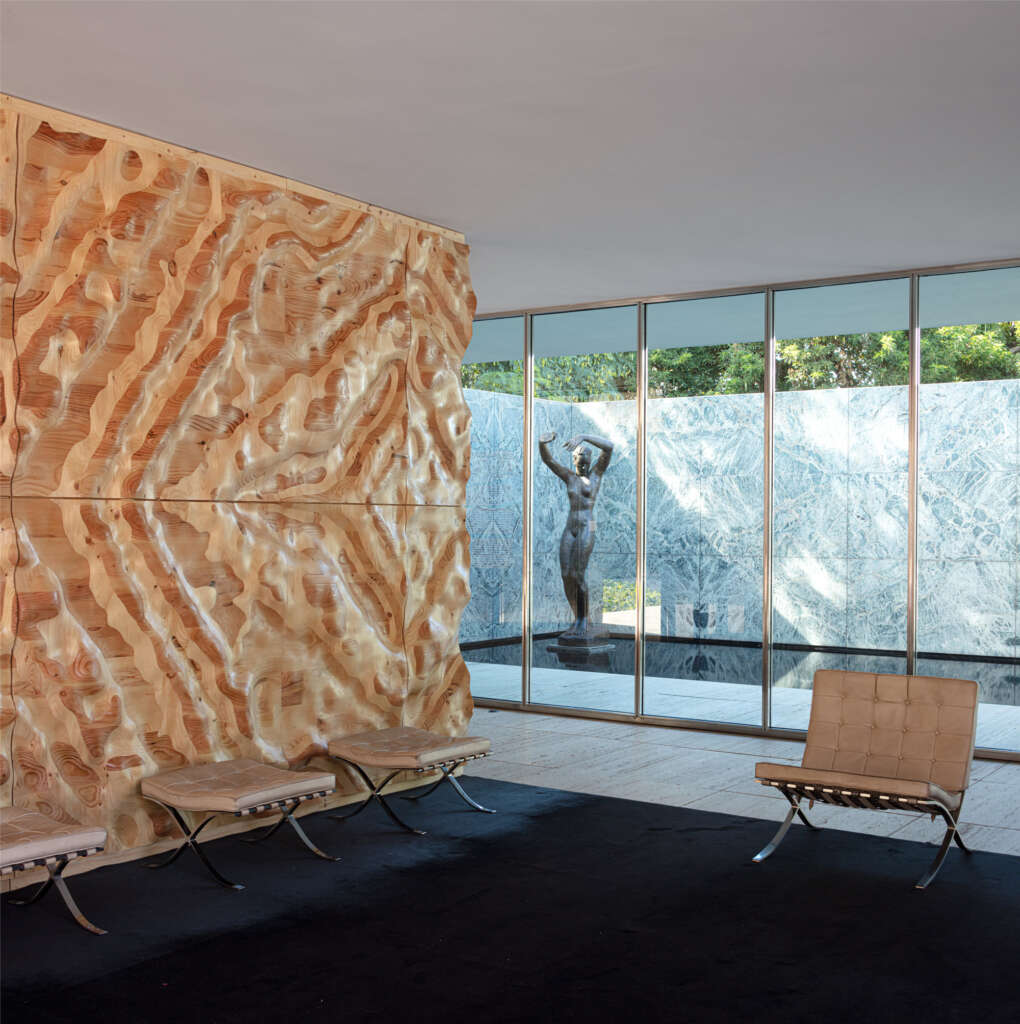
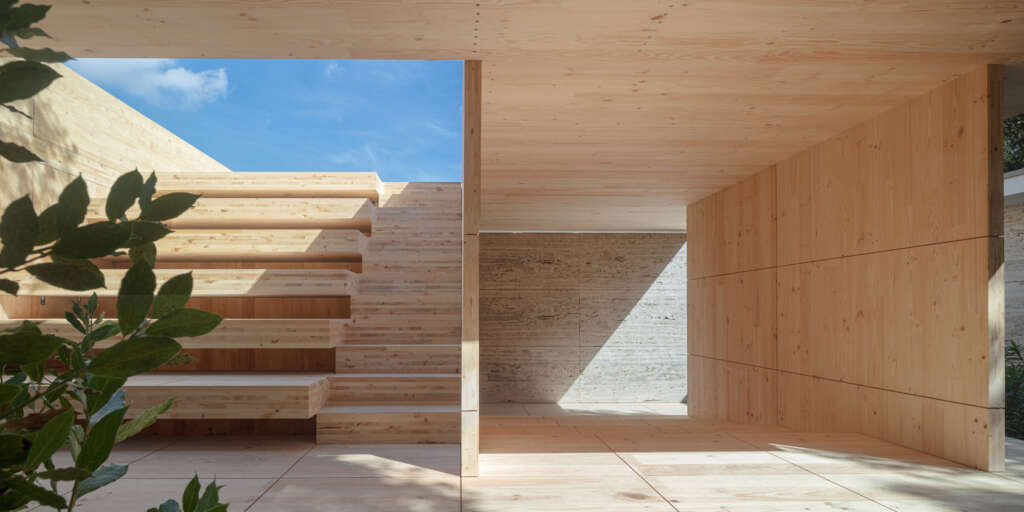
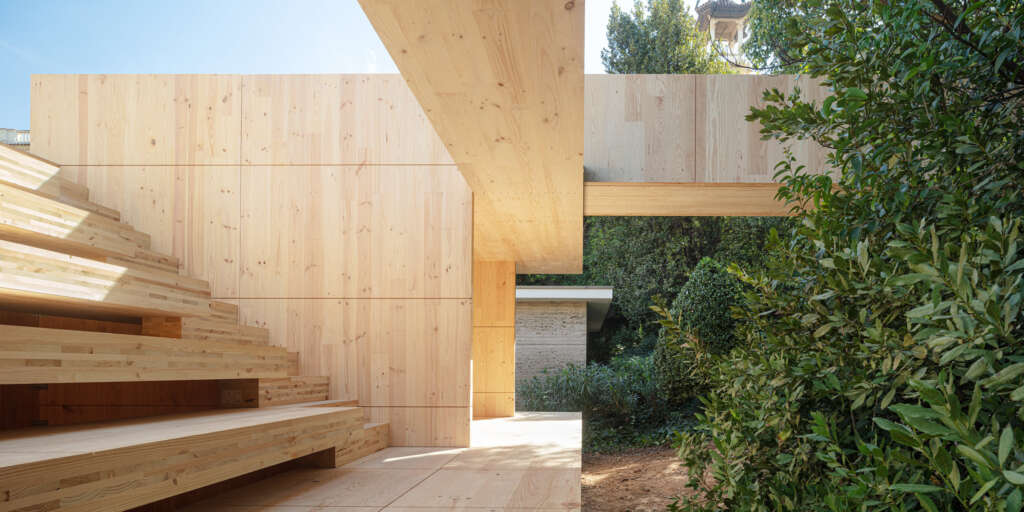
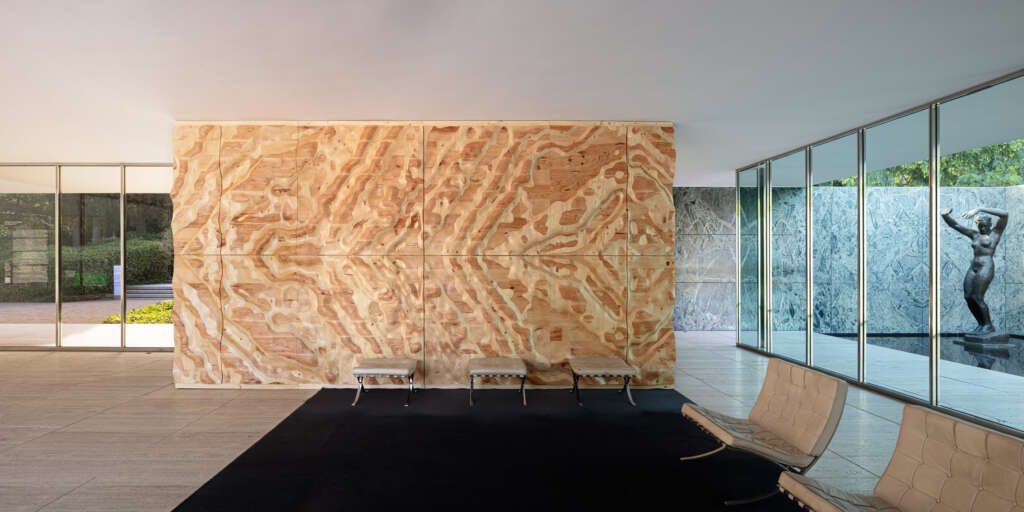
The need for a new urban model with more wood(s)
The Pavilion installation also serves as a stage for the launch of MASS MADERA, a national network established through grant funding by Built by Nature whose main objective is to establish, coordinate and connect key agents working together to promote building new mass timber structures and thus reduce CO2 emissions associated with the building sector.
But why mass timber? Its use in buildings is one of the solutions with the greatest impact on decarbonizing the construction process. On the one hand, wood can replace materials from fossil resources such as concrete or steel, to capture the CO2 absorbed by trees and store it in the form of buildings and to allow more CO2 to be sequestered in new generations of trees in the forest.
For 25 years, the production of industrialized solid wood has been growing exponentially, becoming the main focus of the transformation of the current building model. In Europe, CLT is one of the main competitors against other more polluting materials such as steel, concrete or brick, especially in the residential market. If the 19th century was the century of steel and the 20th century the century of concrete, the 21st century will be the century of wood, not only because of its constructive qualities, but also because it is the only material with potentially positive externalities. Industrialized solid wood has the potential to create an exemplary model of a circular economic flow. It is a material of renewable origin, its use promotes sustainable forest management, it has the capacity to safely store CO2, it is light, easy to transport and good for insulating while remaining a structural material, and it allows for rapid construction with greater control of the construction site, lower risks and less pollution.
Cities play a key role as a place to absorb CO2 emissions and keep us below 1.5/2 degrees of global warming. Most of the emissions from buildings occur during the construction process, including the sourcing of materials, rather than in the emissions from their operation.
In this context, a sustainably managed productive forest is the best natural solution for absorbing emissions. Currently, many wood products store CO2 for a short time (paper, firewood, etc.), so the carbon sequestered by trees returns to the atmosphere in a very short amount of time. In addition, many productive forests are not optimally managed for carbon sequestration (too much logging, short harvesting rotations, etc.). However, with the promotion of wood as a new building model, we could see a greater demand for certified wood, and therefore an increase in the number of productively managed forests. The transformation towards the use of wood in the urban environment requires stimulation to break down the barriers that limit its acceleration: from the insecurities of the sector itself, the lack of companies and experts specialized in industrialized solid wood, the lack of incentives and specific regulations that facilitate the use of this material or the lack of knowledge of the benefits of wood among the general public. Networks such as MASS-MADERA are born with the intention of overcoming these challenges and barriers, with the aim of communicating, coordinating and connecting agents in the use of these construction systems, accelerating their growth.

A common action protocol for the cities and the environment
Within the framework of this event, the BARCELONA PROCOL: European Action Plan for Cities and the Earth was also presented.
Given that the future of the earth, its ecosystems and our own civilization will be decided in and by cities, it is necessary to ensure that the materials, means and methods with which we build and manage our cities are mainly extracted from regionally available biological resources. Only in this way can we transform urban settlements, the origin of climate change, into catalysts for ecosystem healing.
This idea of a regenerative built environment is outlined in the 2022 Charter for Cities and Earth, launched in Rome. Now is the time to translate this idea into reality. The BARCELONA PROTOCOL calls on European cities to take the lead and develop an action plan.
The document, which has been developed by an international team with the participation of Bauahus Earth, IAAC, EFI Biocities Facility and Barcelona City Council, defines specific actions to be carried out in the short term; such as carrying out a CO2 census of all buildings in order to measure the need for their energy rehabilitation, as well as requesting that all projects to be built must first define that they will be carried out with zero emissions and using biomaterials from the region.
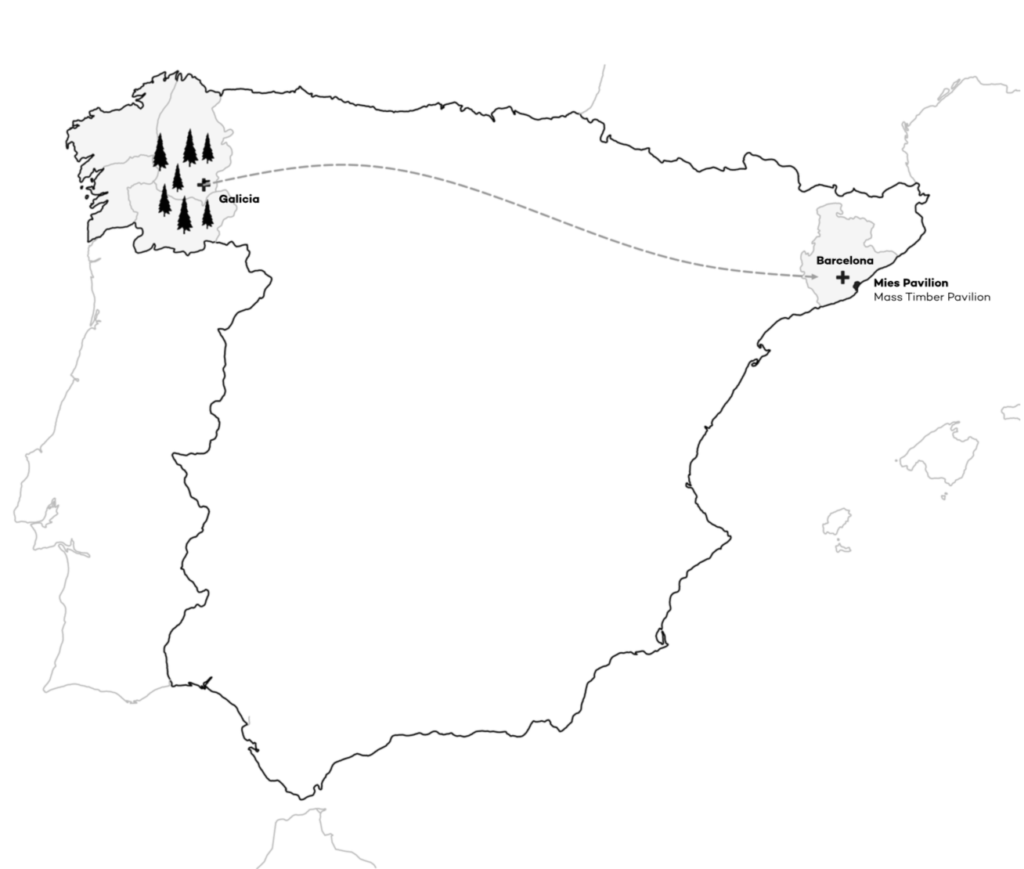
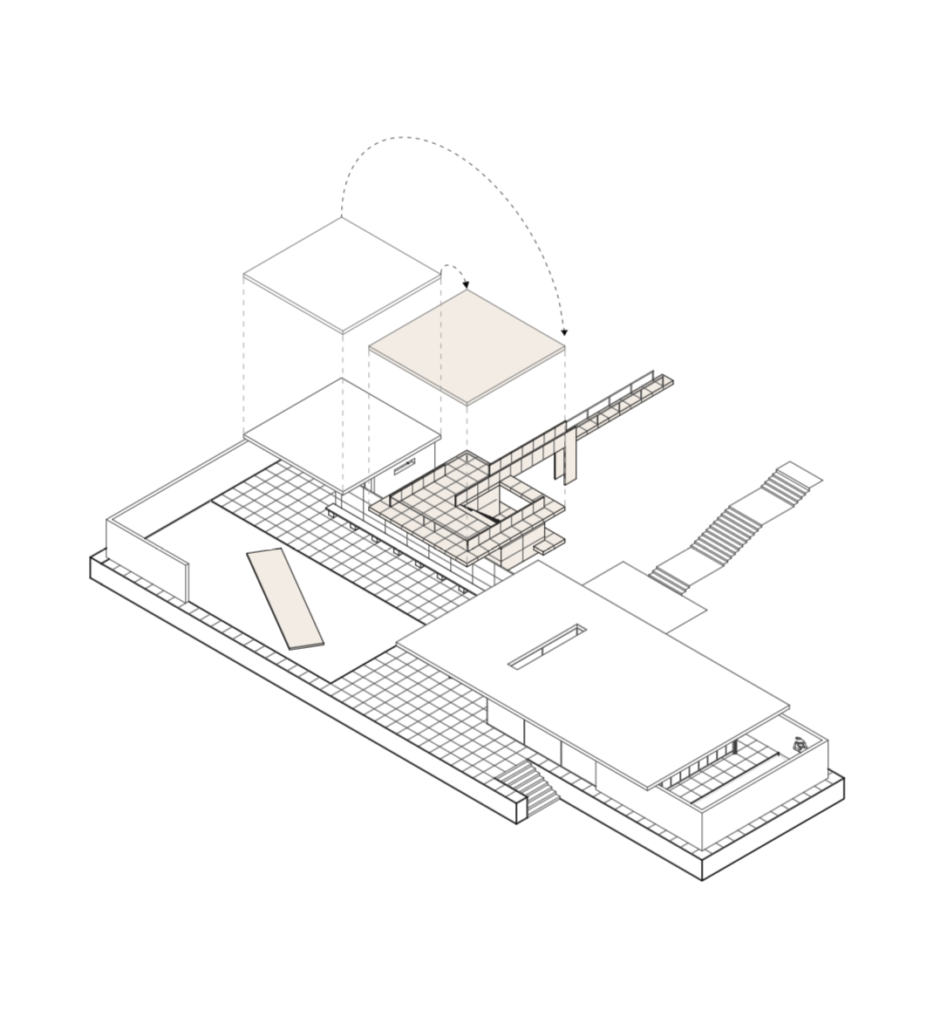
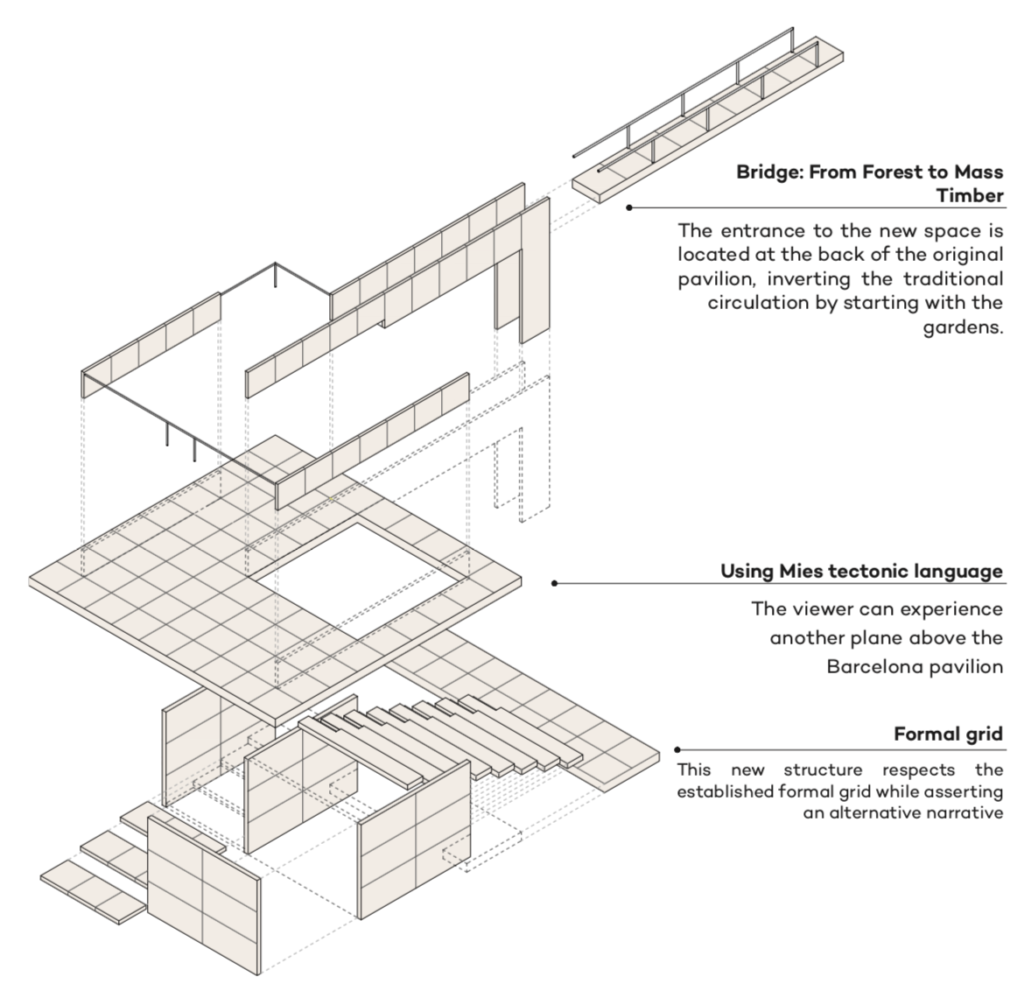
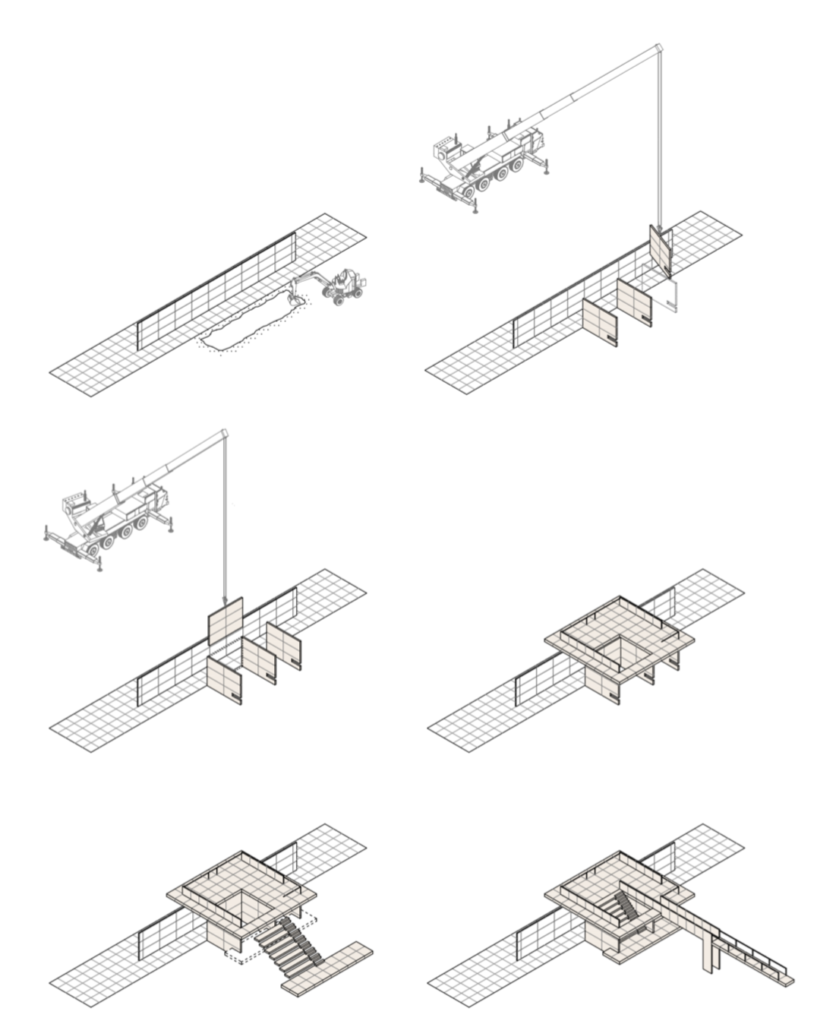
Project Credits
Authors
Daniel Ibáñez, is a practicing architect and urbanist and director of the Institute for Advanced Architecture of Catalonia (IAAC). He holds a Doctor of Design degree from Harvard University GSD. His professional, research and academic focus is on the architectural and urban implications of renewable, carbon storing biomaterials in construction. He is building the tallest social housing mass timber building in Spain and he is co-author of the book Wood Urbanism: From the Molecular to the Territorial (Actar, 2019). Additionally, he is Senior Urban Consultant at the World Bank, advising international governments and institutions on timber housing and timber urban development.
Vicente Guallart, architect, urban planner and researcher. He is co-director of Urbanitree, a company created in 2022 for the development of ecological buildings and cities projects. He has been chief architect of Barcelona (2011-15) and co-founder of the Institute for Advanced Architecture of Catalonia. He has developed numerous zero emission buildings in Asia and in Europe. He is the author of numerous books such as “The self-sufficient city” or “Geologics”. Currently, he also directs the Valldaura Labvs master’s degree, a pioneering center in the production of prototypes made of local wood.
Alan Organschi, director of the innovation labs at BE and design principal and partner at Gray Organschi Architecture in New Haven, a firm recognized nationally for its residential, institutional, and infrastructural design. He is also the principal of JIG Design Build, an offshoot specialized in the prototyping, fabrication, and installation of building components and systems. Organschi is also a member of the steering committee of the Cities and Climate Change Network, an international consortium of scientists, policy-makers, and design practitioners engaged in interdisciplinary research and the implementation of global projects in carbon mitigation and climate adaptation.
IAAC: Mariano Gómez-Luque, Jesús Mora, David Andrés León, Miguel Nevado, Laia Pifarré, Jaume Cebolla, Kya Kerner, Alex Hadley and Bruno Ganem.
Bauhaus Earth: Rosa Hanhausen, Philipp Misselwitz, Eero Puurunen, Ariel Bintang, Anton Gabriel Otto Hofstadt and Philipp Wienkämper.
Bestiario: José Aguirre, Andrés Ortiz Julián Jaramillo and Daniele Pezzatini.
Xilonor/FINSA: Jacinto Seguí, Francisco Roca, Álvaro López




